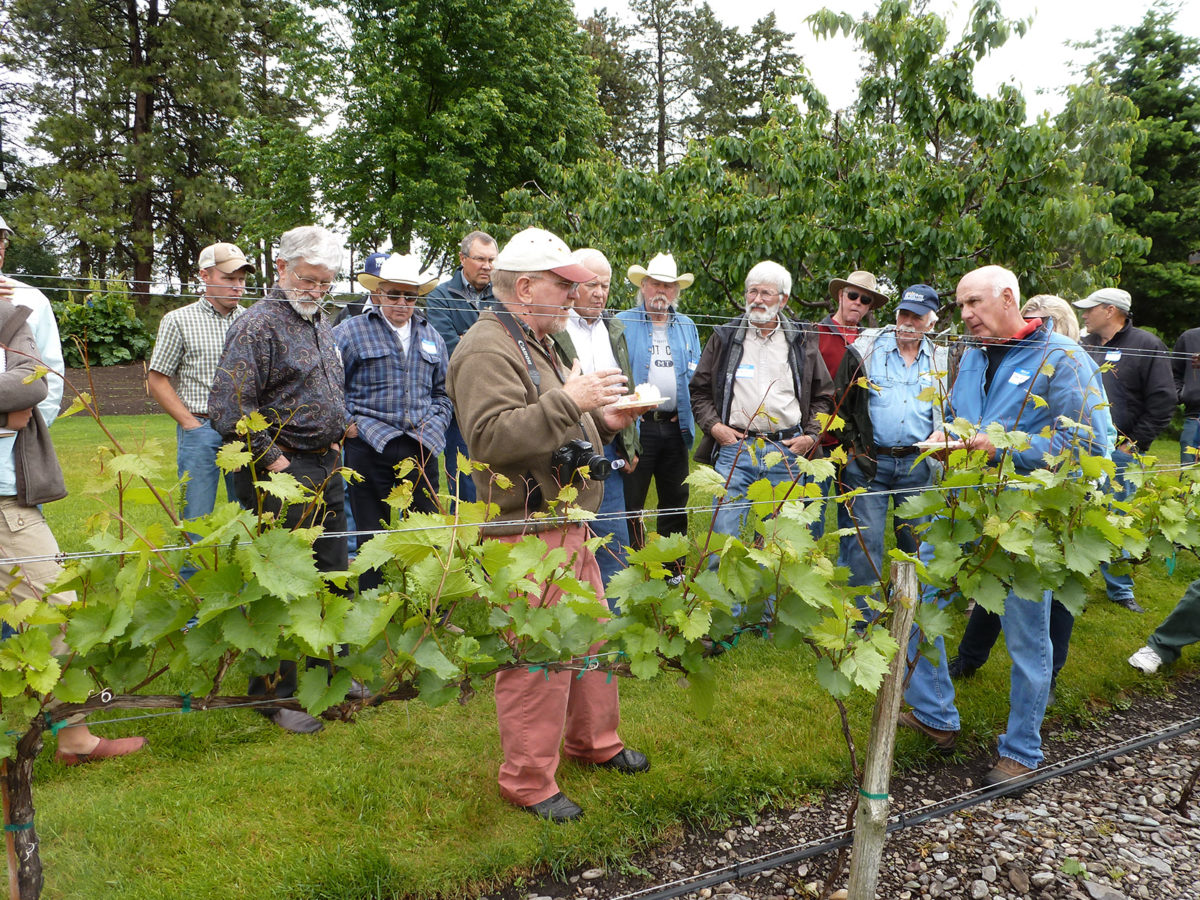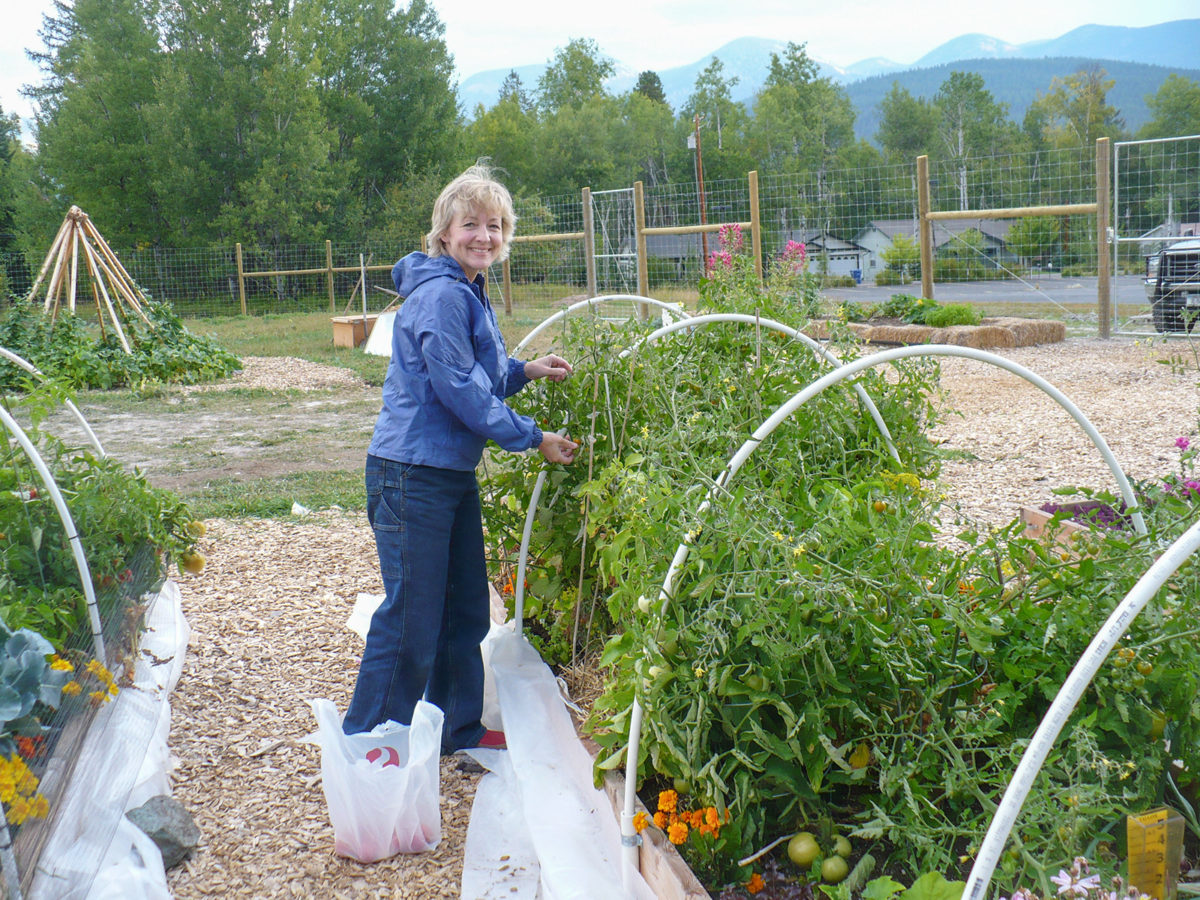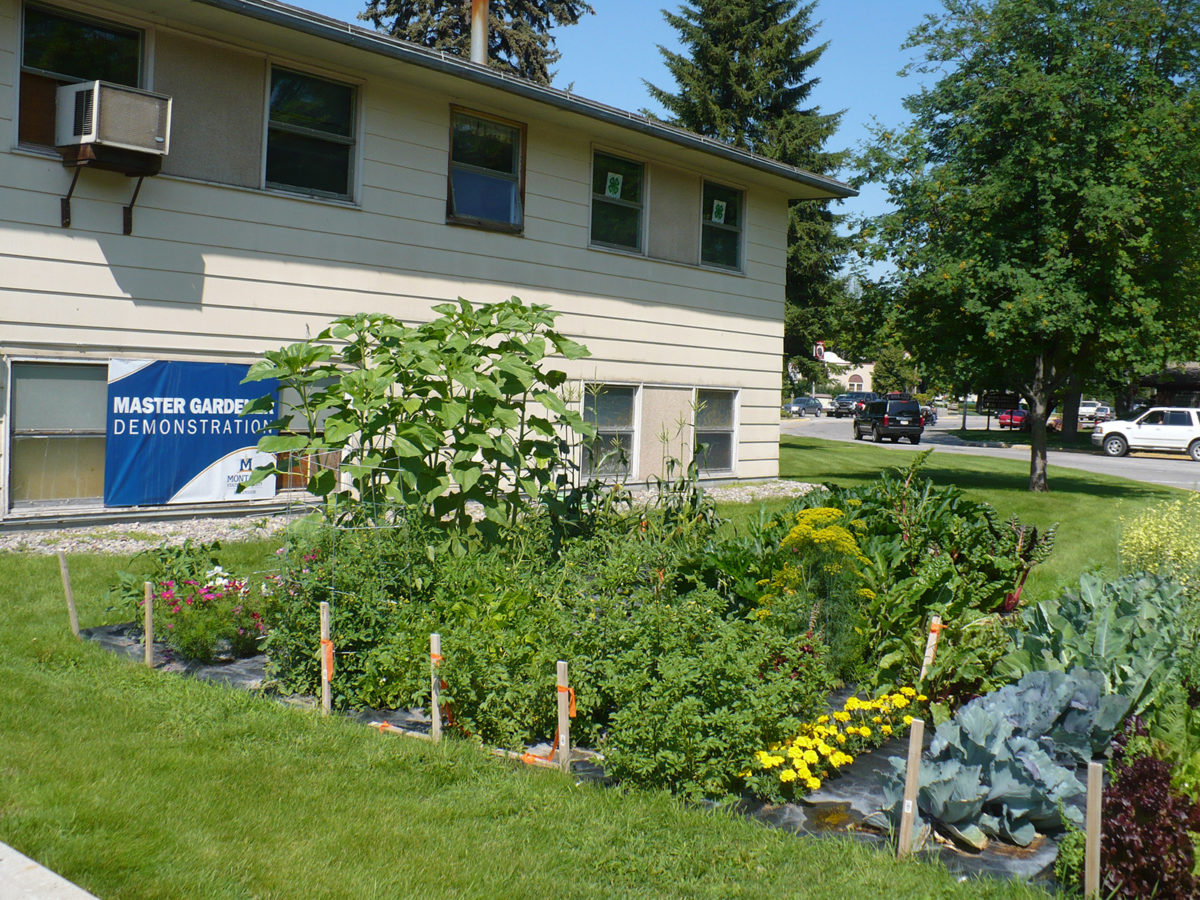
Picture a spiderweb mapped out across Flathead Valley, with strands anchored at seemingly random points — cherry stands along Flathead Lake, the garden plot at Columbia Falls Middle School, a pint of beer poured from the tap of a local brewery, a blighted potato plant in West Valley, and the National Small Business Exporter of the Year. At the center of this spiderweb is Pat McGlynn, who until recently was the Montana State University Agriculture, Natural Resource and Community Development Extension Agent for Flathead County. For nearly 15 years, McGlynn has expertly pulled at the strands of the county’s agricultural web, experimenting with productivity here, answering questions there and innovating everywhere.
“When I first came across the job description it said they were looking for ‘someone with an entrepreneurial spirit,’ and I thought that was interesting because oh man, I have an entrepreneurial spirit,” McGlynn said. “I’d never worked in Extension before, I didn’t know what I was doing, but I connected all the things in my job description and got to work.”
Each state’s land grant university — MSU for Montana — runs an Extension Service as a partnership between the U.S. Department of Agriculture and county and state governments that Congress established more than 100 years ago. The Extension Service has branches in every Montana county (except a few small ones that share) hosting a network of specialists who do research, provide agricultural information, run community and youth outreach programs and “are responsible for teaching life skills and creating educated citizens,” according to McGlynn.
Talking with McGlynn opens a nonstop litany of research projects, footnotes and anecdotes. She easily plucks details from her memory banks — which grape varietals can handle Montana’s 1,600 growing-degree days or the property tax savings on a 10-acre cherry orchard by the lake, or the social structure of an anthill.
To answer one question — how she helped Glacier Hops Ranch develop its innovative Hopzoil, which led to the Exporter of the Year designation, McGlynn took a 26-minute detour through her research history.

One of the first visitors to McGlynn’s office when she started with Extension was the owner of a cherry orchard. Because the timing of Flathead’s cherry season lined up with Washington’s season, there was competition for workers and space at processing plants. Local growers wanted to know if McGlynn could figure out how to shift their harvest schedule.
“I didn’t know anything about cherries, but I said if they’d help me, I’d do it,” McGlynn said. “I love big picture things, I love having a vision, building a team and figuring things out.”
Starting with seven plots scattered around the lake, McGlynn began running trials on various cherry varieties, looking for ones that would harvest later in the summer without compromising size and flavor. While shifting an entire region’s cherry harvest proved too logistically tenuous, it was the first time many orchard owners began to network together, which McGlynn considers the real success. From cherries, she moved on to grapes.
“A passion of mine is agritourism, getting some of those Glacier tourists out into rural areas and figuring out how to get that money spread around the valley a little bit more,” McGlynn said. “I came from the Finger Lakes region in New York and they have beautiful wineries there, so that’s where my head was at — get people out of Glacier, and into the community with wineries, but people kept telling me you can’t grow grapes here.”
Using a similar model to her cherry research, McGlynn gathered up interested grape growers and brought in experts from Minnesota and New York who were experimenting with cold-hardy grape hybrids that could stand up to Montana’s shortened growing season. (A Malbec needs 3,000 growing-degree days a year; Northwest Montana has 1,600 in a good year.)
The program started with just four research plots situated around the valley. As of 2020, 55 different wineries across Montana were using cold-hardy grape hybrids. McGlynn is affectionately referred to as the “Mother of the Grape Association,” after the research team she initially worked with went on to form the Montana Grape and Wine Association.
From grapes, she went to dark fruits (haskaps, goji berries, Saskatoons, elderberries) but in between, her thoughts turned to hops.
Right as the craft brewing movement was gaining momentum, McGlynn began scheming about how to make commercial hop farming an economically viable industry in the state. She knew farmers could grow hops, but the deterrent was the proximity to, Washington’s Yakima Valley, the largest hop-producing region in the world.
“I was thinking agritourism again, how to make a possible venue out of agriculture that people would visit, just like with cherries, just like with the wineries,” McGlynn said. “I was just throwing stuff at the wall to see what sticks.”
She learned about the harvesting process and wrote a grant to get a harvester (named “Hilda”) shipped over from Germany. She worked with Tom Britz of the newly established Glacier Hops Ranch, and they soon realized competing with Yakima’s volume of dried pelleted hops wasn’t feasible. Instead, McGlynn pulled inspiration from the old Flathead mint farmers who used to distill mint oil.
“Fresh hops have about five different oils, but you lose some of them when you have a pelleted hop,” she said. “I thought, what if we could make essential hop oil, like they did with the mint sills, and keep all the flavors in there.”
They started with small batches, and Britz was soon taking samples to conferences. Today, Hopzoil is a shelf-stable “sensory impact” that can be used in the brewing process.
“That was revolutionary, and by far the most successful research I’ve done,” McGlynn says.

“Every day in my work, somebody is going to ask me a question I won’t know the answer to, but I’ll find out,” McGlynn said, summing up the ethos of her life’s work. “I’ve had 47 years of experience in this field but there’s always something new to learn and people have unique situations. If I’m not the expert, I’ll find someone who is.”
Failing to find the latter usually means McGlynn sets out to become an expert herself.
She recalls looking out her office window during her first winter in Kalispell at the piling snow drifts, wondering how she would learn to grow things in this climate.
“I thought the only thing I know how to do is teach a Master Gardener class,” McGlynn said. “I’d taught horticulture my whole life, and I figured I’d teach the class and learn right along with them. I figured whatever mistakes I make, everybody will see it and I’ll learn and I’ll fix it.”
She planted a garden outside her office and the small plot was soon teeming with flowers and vegetables, a living billboard for the Master Gardener program visible to every car that drove around the county courthouse roundabout.
“I accidentally cut out the light from my office because I grew sunflowers that were two stories high,” McGlynn said. “People said ‘can’t you just pick some flowers to put on my desk, and I said no, just grow them 12 feet tall so you can just look out your window.”
While that garden no longer exists, (another dozen or so McGlynn helped start are still active throughout the valley) A native pollinator garden at the Lost Trail Refuge, a medicine wheel garden in Columbia Falls, school gardens in Cayuse Prairie, Somers, Lakeside, Whitefish — the list is endless.
The Master Gardener program has produced more than 500 master gardeners, and McGlynn always lets educators take the course on scholarship.
“The focus of my Ph.D. was public school gardening, math and science and agriculture literacy and what that actually teaches kids,” McGlynn said. “For me, when kids get their hands in the soil and start asking questions, that’s when the critical thinking and investigating starts and there are no canned answers.”

Sitting on the right-hand side of McGlynn’s desk is a stack of pink papers that is hundreds, if not thousands high. Each one is a logged email or phone call from a county resident with a question.
“I’ll get calls about weed identification, insect identification, spots on tomatoes, plants that are curling up in the garden…. I mean it goes on and on,” McGlynn said. “Somebody called me about songbirds that were dying recently. I mean, every question that you can’t think of who else to call, usually ends up coming to our office.”
McGlynn estimates a quarter of calls are of the “name this bug, name this weed” variety. Another quarter is about growing food — what to plant, how to take care of it — which, she said, “never take less than an hour to answer because the answer is never simple.”
A question about what kind of apple tree to plant leads to a detailed inquisition: Where in the valley is the plot? Are these for eating or cider pressing or pie baking? What pollinators are on the property? Can you add electric fencing to detract bears and is that worth a single apple tree?
“People often just want a one-word answer, but there isn’t a one-word answer,” McGlynn said. “I mean, I could, but then I feel like I’m doing them a disservice. I could tell my secretary to always just say ‘Honeycrisp,’ but then they’re not going to be successful. And I want people to be really successful.”
Several years ago, one person texted a question asking why a potato looked like it was melting. It was early example of potato blight, a highly contagious disease.
McGlynn spent weeks tracking down every garden in Kalispell and West Valley that had potatoes from the same seed crop, managing to prevent the Great Flathead Potato Famine.
“After a bunch of years some of these stories are fun to laugh at, but I just realize there’s so much people don’t know,” McGlynn said. “It always reminds me that there’s so much need for education.”
With her hands in so many projects, it’s hard to imagine McGlynn moving into retirement, but she’s certainly ready for a change of pace. Following the departure of the county’s 4H agent in 2020, McGlynn has been covering both jobs, coordinating some 650 youth in 26 different 4H clubs in addition to her regular workload. In her final months with the county, her weekly schedule routinely had four or more nights filled with 4H meetings after a full day of work.
“I’m thinking maybe I’ll be a private consultant, or do property design,” McGlynn said. “I love looking at a whole piece of property and seeing what can be done with it. People will sometimes wreck their property because they don’t know enough of what’s going on with it, and I don’t want to see any part of Montana wrecked.”